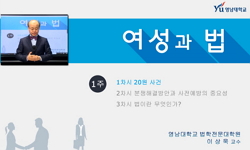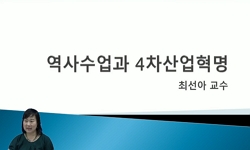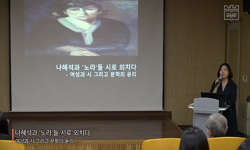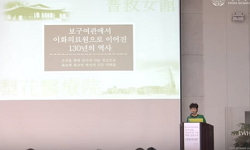The starting point of this paper is to question the possibility of women’s power relationship in Tie Ning’s first novel Rose Gate. This work mainly tells the story of three generations formed by her grandmother, aunt and the protagonist, little Su...
http://chineseinput.net/에서 pinyin(병음)방식으로 중국어를 변환할 수 있습니다.
변환된 중국어를 복사하여 사용하시면 됩니다.
- 中文 을 입력하시려면 zhongwen을 입력하시고 space를누르시면됩니다.
- 北京 을 입력하시려면 beijing을 입력하시고 space를 누르시면 됩니다.

여성의 주체되기 양상과 그 한계 ― 티에닝(鐵凝) ≪장미문≫(玫瑰門)에 나타난 증상 읽기 = Becoming the Women’s Subject and Its Limitations ― Reading the ‘symptom’ of the Tie Ning’s “Rose Gate”
한글로보기https://www.riss.kr/link?id=A107296467
- 저자
- 발행기관
- 학술지명
- 권호사항
-
발행연도
2021
-
작성언어
-
- 주제어
-
등재정보
KCI등재
-
자료형태
학술저널
-
수록면
161-187(27쪽)
-
KCI 피인용횟수
0
- DOI식별코드
- 제공처
- 소장기관
-
0
상세조회 -
0
다운로드
부가정보
다국어 초록 (Multilingual Abstract)
The starting point of this paper is to question the possibility of women’s power relationship in Tie Ning’s first novel Rose Gate. This work mainly tells the story of three generations formed by her grandmother, aunt and the protagonist, little Su Mei. Unlike other studies that trace the memory of the Cultural Revolution and the perspective of women, this paper focuses on the period when gender differences were replaced by absolute class rights, forming a distorted women’s Hierarchical order. Moreover, focusing on the hierarchical order formed by three generations of women, this paper observes the various struggles of women in the novel, and investigates the meaning of their behaviors and the “objects” they are trying to resist. Another point to be noted is that during the period of Cultural Revolution, women still exist as patriarchal shadows. Even after the extended family was transformed into a nuclear family, it was also depicted as a woman who is subordinate to the patriarch. When the protagonist overlapped with the background of the Cultural Revolution at that time, there will be a symptom. So with this point in mind, the author further explores the historical environment that formed this deformity at that time. Thus the women’s Hierarchical order can be questioned. Furthermore, this paper will eventually understand the relationship between modern socialist state and the women through the distorted women’s Hierarchical order that appears in the Tie Ning’s novel
참고문헌 (Reference)
1 슬라보예 지젝, "이데올로기의 숭고한 대상" 새물결 2013
2 다이진화, "성별중국" 여이연 2009
3 브루스 핑크, "라캉의 주체" 도서출판 2010
4 서영채, "강박과 히스테리 사이, 메이지 유신과 동아시아의 근대성: 시마자키 도손, 루쉰, 염상섭" 일본연구소 10 (10): 162-193, 2018
5 나병철, "가족로망스와 성장소설" 문예출판사 2004
6 최은정, "铁凝의 『玫瑰门』 다시 읽기 - 여성인물의 ‘되기’를 중심으로 -" 비교문화연구소 31 : 197-216, 2013
7 闫红, "鐵凝與新时期文學" 山东师範大學 2007
8 贺绍俊, "鐵凝: 快乐地游走在“集体写作”之外" (6) : 2003
9 于轻, "走出≪玫瑰門≫ -- 谈女性文學中的“自赏意识”" (1) : 1991
10 戴錦華, "眞淳者的質詢 -- 重讀鐵凝" (5) : 1994
1 슬라보예 지젝, "이데올로기의 숭고한 대상" 새물결 2013
2 다이진화, "성별중국" 여이연 2009
3 브루스 핑크, "라캉의 주체" 도서출판 2010
4 서영채, "강박과 히스테리 사이, 메이지 유신과 동아시아의 근대성: 시마자키 도손, 루쉰, 염상섭" 일본연구소 10 (10): 162-193, 2018
5 나병철, "가족로망스와 성장소설" 문예출판사 2004
6 최은정, "铁凝의 『玫瑰门』 다시 읽기 - 여성인물의 ‘되기’를 중심으로 -" 비교문화연구소 31 : 197-216, 2013
7 闫红, "鐵凝與新时期文學" 山东师範大學 2007
8 贺绍俊, "鐵凝: 快乐地游走在“集体写作”之外" (6) : 2003
9 于轻, "走出≪玫瑰門≫ -- 谈女性文學中的“自赏意识”" (1) : 1991
10 戴錦華, "眞淳者的質詢 -- 重讀鐵凝" (5) : 1994
11 鐵凝, "玫瑰門" 人民文學出版社 2006
12 戴錦華, "涉渡之舟" 人民文學出版社 2010
13 田泥, "有效的女性敍事轉身與追索" 2009
14 李文麗, "≪玫瑰門≫敍事硏究的回顧與反思" (5) : 2018
15 余馥凝, "≪玫瑰門≫中的三代女性形象" (4) : 2011
16 梁盼盼, "“革命”與“身體”的“20世纪中国女性史” -- 重讀≪玫瑰門≫" 2017
동일학술지(권/호) 다른 논문
-
지역 유형론적 관점에서 본 한어(漢語)와 소수 민족 언어의 비음 운미 유형 ― 중국 중·남부 지역을 중심으로
- 중국어문연구회
- 盧慧靜 ( Roh Hyejeong )
- 2021
- KCI등재
-
- 중국어문연구회
- 張廷任 ( Chang Jungim )
- 2021
- KCI등재
-
송대문인(宋代文人)의 석각(石刻)수집 ― 구양수(歐陽脩)의 ≪집고록(集古錄)≫을 중심으로
- 중국어문연구회
- 安芮璿 ( An Yeasun )
- 2021
- KCI등재
-
중국(中國) 문언소설(文言小說)에서의 환생(還生) 모티프 분석 ― 과보(果報)와 인연(因緣)을 중심으로
- 중국어문연구회
- 延炤姈 ( Yeon Soyung )
- 2021
- KCI등재
분석정보
인용정보 인용지수 설명보기
학술지 이력
| 연월일 | 이력구분 | 이력상세 | 등재구분 |
|---|---|---|---|
| 2027 | 평가예정 | 재인증평가 신청대상 (재인증) | |
| 2021-01-01 | 평가 | 등재학술지 유지 (재인증) |  |
| 2018-01-01 | 평가 | 등재학술지 유지 (등재유지) |  |
| 2015-01-01 | 평가 | 등재학술지 유지 (등재유지) |  |
| 2011-01-01 | 평가 | 등재학술지 유지 (등재유지) |  |
| 2009-01-01 | 평가 | 등재학술지 유지 (등재유지) |  |
| 2007-01-01 | 평가 | 등재학술지 유지 (등재유지) |  |
| 2005-01-01 | 평가 | 등재학술지 유지 (등재유지) |  |
| 2002-01-01 | 평가 | 등재학술지 선정 (등재후보2차) |  |
| 1999-07-01 | 평가 | 등재후보학술지 선정 (신규평가) |  |
학술지 인용정보
| 기준연도 | WOS-KCI 통합IF(2년) | KCIF(2년) | KCIF(3년) |
|---|---|---|---|
| 2016 | 0.3 | 0.3 | 0.29 |
| KCIF(4년) | KCIF(5년) | 중심성지수(3년) | 즉시성지수 |
| 0.28 | 0.26 | 0.58 | 0.13 |





 KCI
KCI KISS
KISS






